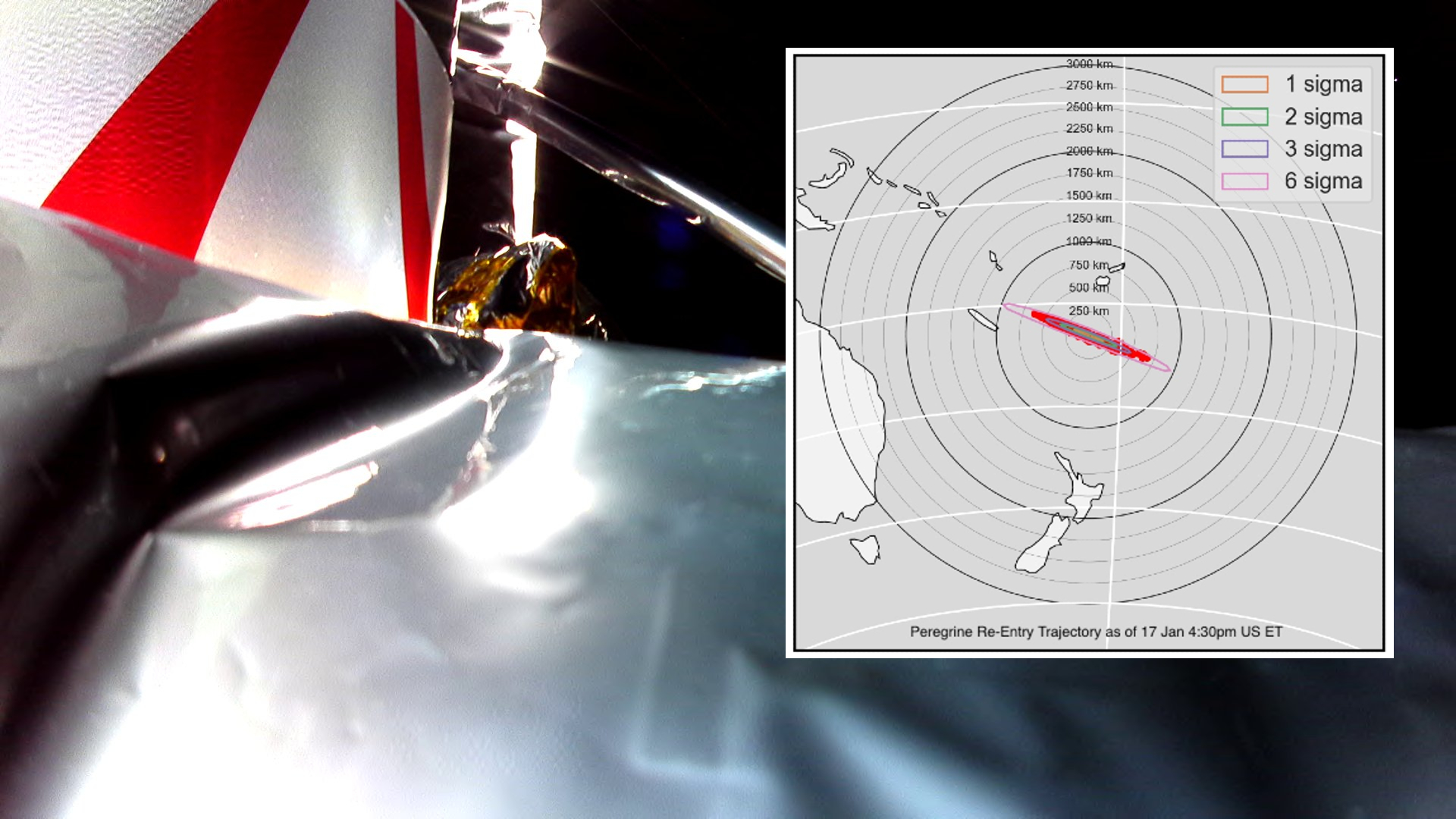
The private Peregrine moon lander's long journey is about to come to an end, back on its home planet.
Peregrine will likely slam into Earth's atmosphere over the southern Pacific Ocean today (Jan. 18) around 4 p.m. EST (2100 GMT), according to its builder, the Pittsburgh-based company Astrobotic.
"Astrobotic has positioned the Peregrine spacecraft for a safe, controlled re-entry to Earth over a remote area of the South Pacific," the company wrote in an update on Wednesday evening (Jan. 17).
"The team has been continuously monitoring our re-entry analysis with NASA," Astrobotic added, noting that such work has revealed "no anticipated hazards."
Related: Private Peregrine moon lander failure won't stop NASA's ambitious commercial lunar program
Peregrine launched Jan. 8 on the first-ever mission of Vulcan Centaur, United Launch Alliance's powerful new rocket.
The lander is toting 20 payloads for a variety of customers, including NASA, which put five scientific experiments on board via its Commercial Lunar Payload Services program. The lander is also carrying human remains, in the form of memorial payloads manifested by the companies Celestis and Elysium Space.
Peregrine aimed to deliver this gear to the surface of the moon next month, but that plan was scuttled by a fuel leak that cropped up shortly after liftoff. The lander's handlers traced the problem to a ruptured oxidizer tank, which may have been caused by a stuck valve.
Despite the propulsion anomaly, Peregrine remains operational. The lander made it all the way out to lunar distance recently, then began looping back, on a collision course with Earth. Astrobotic, working with NASA, developed a plan to make the coming impact as safe as possible.

The Peregrine team took two main steps to put Peregrine on the best possible crash trajectory, Astrobotic wrote in Wednesday evening's update. First, they performed a series of 23 small burns with the lander's main engines. (The fuel leak made a single long burn impossible.)
"Secondly, we adjusted the spacecraft's attitude so the force induced by the leaking propellant shifted us towards the South Pacific Ocean," Astrobotic wrote.
"The procedures the team executed were to minimize the risk of debris reaching land," they added. "Astrobotic continues to work closely with NASA and other relevant government authorities to keep everyone informed and to solicit feedback as appropriate."
We should hear more about Peregrine's death plunge soon, and not just via an update on Astrobotic's website. The company plans to host a media telecon on Friday (Jan. 19) at 1 p.m. EST (1800 GMT) to discuss Peregrine's mission and its fate.







